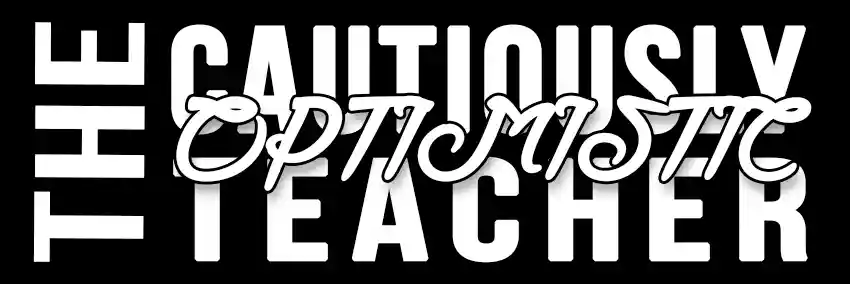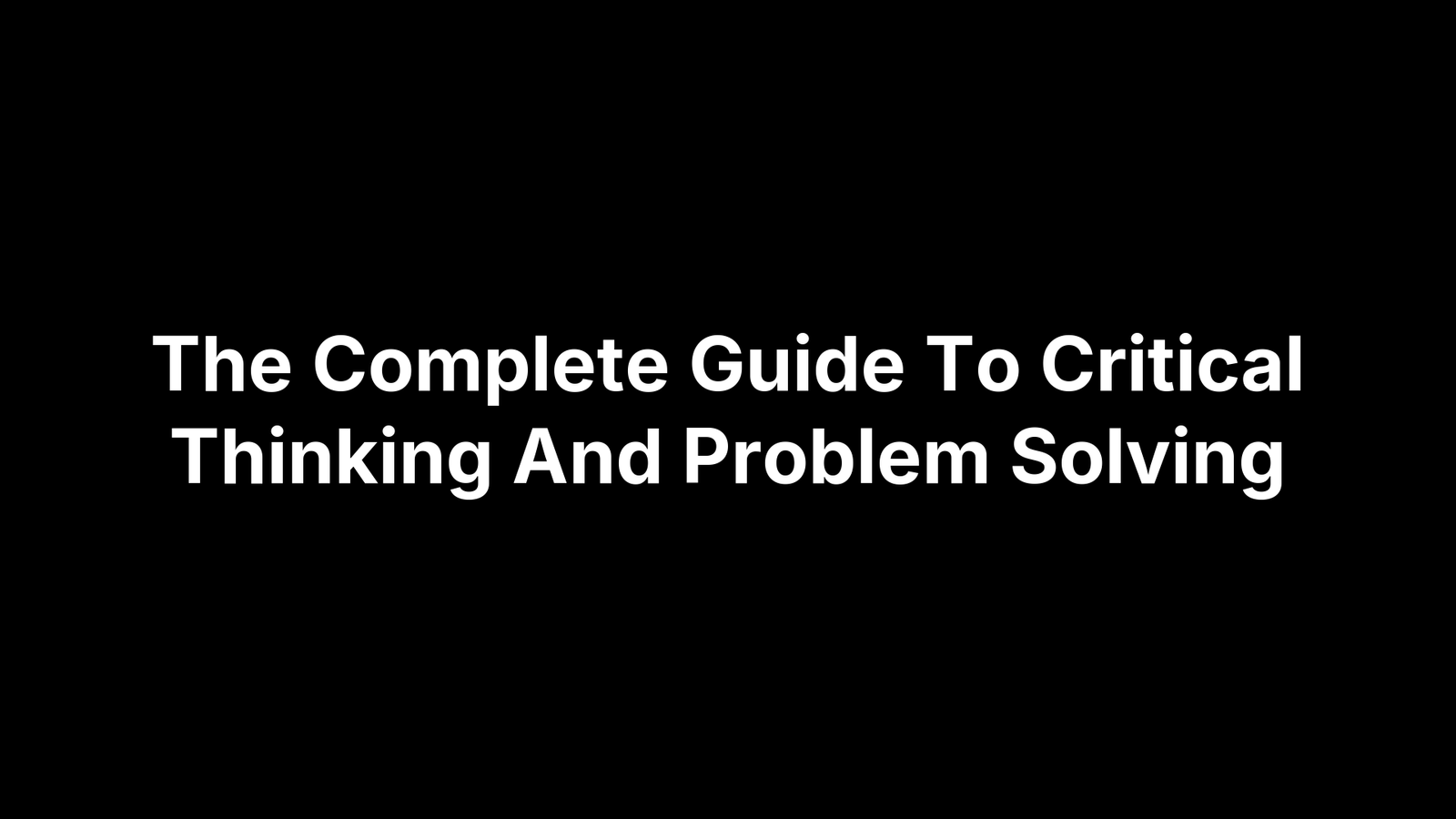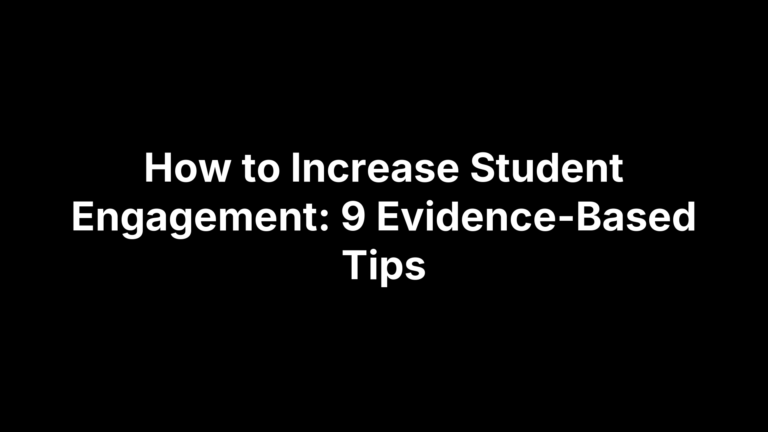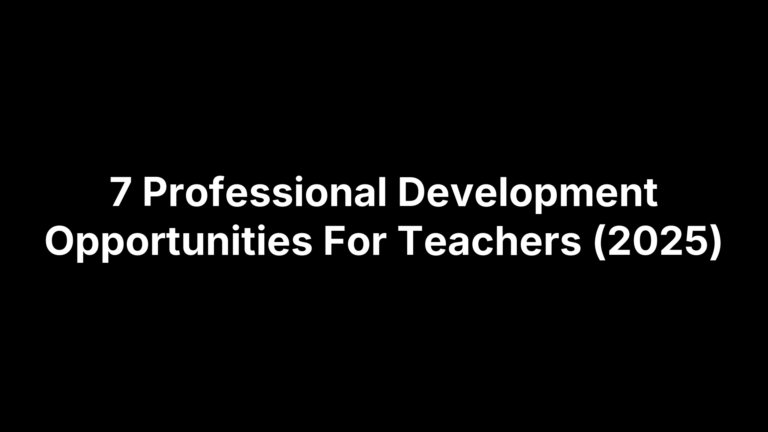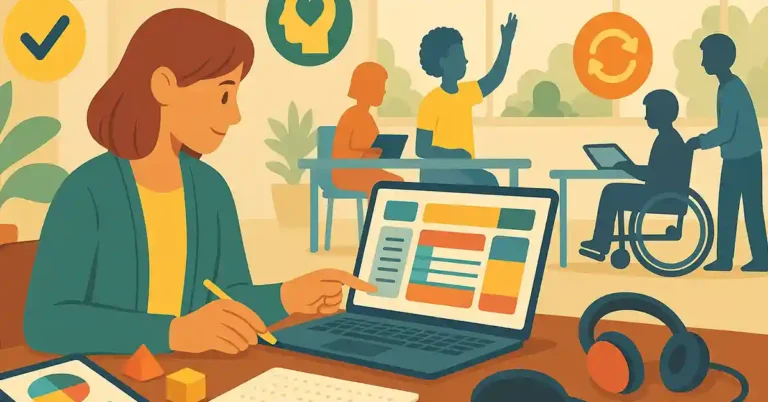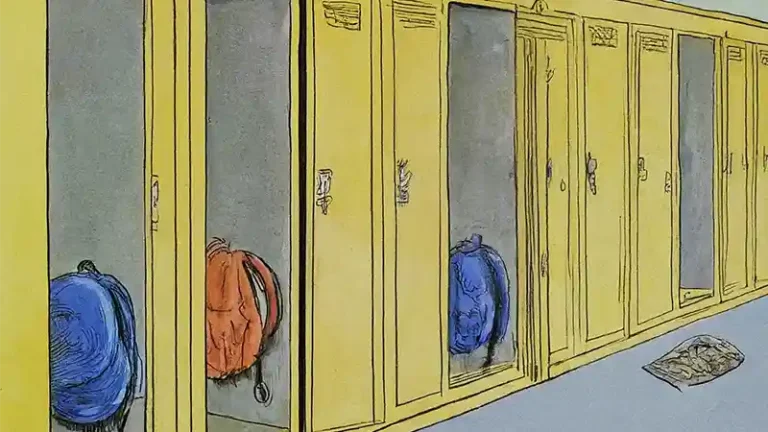The Complete Guide To Critical Thinking And Problem Solving
Critical thinking is the habit of slowing down to ask better questions, weigh evidence, and make fair‑minded judgments. Problem solving is what you do with that thinking: define a challenge, generate options, test them against criteria, and choose a workable plan. Together, they turn information into sound decisions and purposeful action for you and your students.
This guide translates those ideas into classroom practice. You’ll get clear definitions and see how the two skills relate and differ, the core building blocks (dispositions, criteria, argument, reasoning), and how to teach metacognition so learners can think about their thinking. We’ll cover spotting bias and logical fallacies, a simple repeatable problem‑solving routine, questioning techniques that drive dialogue, and everyday strategies that build a culture of inquiry. You’ll also find authentic task ideas, fair and efficient assessments, UDL-aligned planning, differentiation tips, cross‑curricular prompts, careful ways to use AI as a scaffold, curated resources, a 30‑60‑90 day rollout plan, and advice for showcasing your impact.
Why critical thinking and problem solving matter for students and teachers
When students practice critical thinking and problem solving, they stop being passive receivers of facts and start making reasoned judgments. That shift helps them sift misinformation, evaluate sources, and transfer learning across subjects. It also strengthens civic readiness—students learn to weigh claims, consider alternatives, tolerate ambiguity, and make sound decisions beyond school.
For teachers, these skills unlock clearer learning evidence and more engaged classes. Short formative checks like “minute papers” surface misconceptions early, cooperative learning invites peer reasoning, and case discussions turn content into analysis. The result: richer dialogue, fewer reteaches, and instruction that targets how students think—not just what they recall.
Critical thinking vs. problem solving: how they relate and how they differ
Think of critical thinking as the mind’s quality control and problem solving as the production line. Critical thinking is a disciplined, ongoing habit of questioning assumptions, evaluating evidence, weighing alternatives, and monitoring your own thinking. Problem solving is a time‑bound workflow: define a specific challenge, generate options, test them against criteria, and act. They feed each other—strong critical thinking sharpens how you frame and test solutions; structured problem solving channels that thinking into results students can implement and assess.
- Critical thinking: Evaluate claims, reasons, and evidence.
- Problem solving: Resolve a defined challenge with a plan.
- Time horizon: Ongoing habit vs. episodic process.
- Output: Justified judgment vs. implemented solution with follow‑up.
The building blocks of critical thinking: dispositions, criteria, argument, and reasoning
Before students can “do” critical thinking and problem solving, they need a shared toolkit. Building four essentials—dispositions, criteria, argument, and reasoning—gives them language and habits to judge quality, not just recall facts, and to justify solutions they implement.
- Dispositions: Cultivate skepticism, open‑mindedness, fair‑mindedness, respect for evidence, and a willingness to change position when reasons warrant it. Normalize clarity and precision in talk and writing.
- Criteria: Teach students to test claims against standards: relevant, accurate facts; credible sources; precision; lack of bias; freedom from logical fallacies; logical consistency; and strong reasoning.
- Argument: Frame arguments as claims supported by evidence and reasons. Have students identify, evaluate, and construct arguments (including counterclaims), using clear structures like claim–evidence–reasoning.
- Reasoning: Practice inferring conclusions from premises and checking the logic that connects data to claims. Examine assumptions, compare interpretations, and watch for invalid leaps or circularity.
Teach metacognition so students can think about their thinking
Metacognition is thinking about one’s own thinking—being aware of how you’re approaching a task and using that awareness to adjust strategy as you work. When learners monitor and regulate their thinking, they make sharper judgments and move through critical thinking and problem solving with fewer detours.
- Think‑alouds: Model how you question assumptions, weigh evidence, and choose strategies in real time.
- Plan–Monitor–Evaluate: Before, during, after a task, set a plan, check progress, then reflect on results and next steps.
- Self‑question stems: “How do I know?”, “What evidence supports this?”, “What’s an alternative?” placed on desks or slides.
- Criteria check‑ins: Use rubrics as live checklists to align work with relevance, accuracy, and logic.
- Error analysis/exam wrappers: After tasks, identify mistakes, causes, and concrete fixes.
- Minute papers: Quick reflections on the most important learning and lingering questions to guide adjustment.
Teach students to recognize bias and avoid logical fallacies
Students swim in information every day; helping them name bias and spot faulty logic keeps critical thinking and problem solving on solid ground. Research-backed guidance emphasizes examining assumptions and biases, avoiding emotional reasoning and oversimplification, considering alternative interpretations, and spotting logical fallacies. Make that visible with fast, repeatable moves your class can practice together.
- Bias checks: Who is speaking? What’s their purpose? What’s missing that could change the conclusion?
- Credibility scan: Is the evidence relevant, accurate, and from a credible source? Is the claim precise and consistent?
- Dialogue analysis: Use short written dialogues; in teams, flag biases, excluded evidence, alternative interpretations, and errors in reasoning, then share revisions.
- Counter-interpretations: Generate at least two plausible alternatives before deciding; note which evidence supports each.
- Emotional pause: Highlight charged language; restate claims using neutral wording and evidence only.
- Fallacy spotlights: Model two frequent culprits and practice repairs:
- Bandwagon appeal: “Everyone else is doing it” ≠ good reason. Replace with relevant evidence.
- Circular reasoning: Claim restates itself (“It’s true because it’s true”). Supply independent support or revise the claim.
A simple, repeatable problem-solving framework for your class
Give students a short routine they can apply in any subject so critical thinking and problem solving become habits, not one-offs. Post the steps, model them with think‑alouds, and run quick cycles on real classroom issues so the workflow sticks.
- Define the problem: Write a concise problem statement listing facts, causes, constraints, affected stakeholders, and a clear success criterion.
- Generate options: Brainstorm multiple solutions without judging. Aim for range—at least one quick, low‑cost fix and one bolder approach.
- Evaluate and test: Weigh options against shared criteria (relevance, accuracy, credibility, logic). Pilot the strongest idea on a small scale or with sample data.
- Decide, act, and document: Choose a plan, assign owners and timelines, track evidence and feedback, and note what worked, what didn’t, and why for next time.
Close each cycle with a one‑minute reflection to capture lessons learned—fuel for better questions and sharper decisions in the next round.
Use questioning to drive inquiry and dialogue
Good questions turn coverage into discovery. They surface assumptions, test evidence, and move students from “what” to “so what” to “now what”—the engine of critical thinking and problem solving. Make questioning a shared routine: model neutral, evidence‑seeking prompts, require students to generate their own, and sequence talk from clarifying to evaluating to deciding on a next step.
- Reciprocal Peer Questioning: Post stems (“What are the strengths/weaknesses of…?”). Students write, swap, and discuss.
- Reader’s Questions: Collect 1–2 questions from assigned texts; use them to open class.
- Case/Discussion Method: Present a case without a conclusion; guide with prepared prompts.
- Conference‑Style Seminar: Students question one another; you facilitate with strategic probes.
- Question Ladder: Clarify → Probe assumptions → Examine evidence → Consider alternatives → Decide.
Build a culture of inquiry, curiosity, and productive ambiguity
When everything has a single “right” answer, students stop thinking. Critical thinkers learn to tolerate and use uncertainty—Wade names ambiguity as a hallmark of good thinking, and Strohm & Baukus argue that ambiguity and doubt are not obstacles but fuel for deeper analysis. Build daily norms that reward curiosity, multiple interpretations, and evidence‑based revision so critical thinking and problem solving feel safe, rigorous, and interesting.
- Normalize uncertainty: Say, “What would change our minds?” and praise thoughtful revisions.
- Conflicting sources protocol: Compare two credible texts; surface assumptions, missing evidence, and decision criteria.
- Multiple points of view: Assign roles to explore competing interpretations before concluding.
- Evidence before opinion: Require clear claim–evidence–reasoning in talk and writing.
- Exit with ambiguity: Ask, “Where does uncertainty remain—and what data would reduce it?”
Proven classroom strategies to practice critical thinking every day
You don’t need to redesign your course to build critical thinking and problem solving—embed short, repeatable moves into daily lessons. Aim for routines that surface assumptions, test evidence, and ask students to justify choices. Mix individual reflection with cooperative structures so every learner practices reasoning, not just recalling.
- CATS Minute Paper: Close class with “Most important idea?” and “What question remains?” to target misconceptions and plan next steps.
- Cooperative learning with roles: In small groups, assign roles and require claims supported by shared criteria (relevance, accuracy, credibility, logic).
- Micro case discussion: Present a brief, open‑ended case; students state a claim, list evidence, name assumptions, and propose alternatives.
- Argue both sides (quick write): Students write for and against a position, then justify the stronger case.
- Dialogue analysis: Examine short dialogues; flag bias, missing evidence, and fallacies, then rewrite a stronger argument.
- Reader’s Questions: Begin with student‑generated questions from the text to drive inquiry.
- Ambiguity drill: Compare two credible but conflicting sources; identify what new evidence would settle the issue.
- Mini conference seminar: Students question one another while you guide with strategic prompts and press for evidence-based conclusions.
Design authentic tasks that require evidence, analysis, and reflection
Authentic tasks ask students to apply course ideas to make or improve something that matters, not just complete a worksheet. Design every task to demand evidence, analysis, and reflection: students gather credible data, apply shared criteria, construct an argument, then examine impact and what evidence would change their minds. These authentic tasks drive critical thinking and problem solving across subjects.
- Community brief: Propose a fix to a school issue using claim–evidence–reasoning and a counterclaim.
- Source credibility audit: Compare two sources; mark relevance, accuracy, bias, logic; decide which guides action.
- Design–test lab: Justify method, collect data, analyze error, and recommend next steps.
- Reflection loop: End with Plan–Monitor–Evaluate notes on reasoning shifts and evidence quality.
How to assess critical thinking and problem-solving fairly and efficiently
Fair, efficient assessment starts by making thinking visible and scoring it against shared criteria. Focus less on polish, more on how students question assumptions, use relevant, accurate evidence from credible sources, and reason logically. Keep workload light with short artifacts and quick routines you can run weekly to assess critical thinking and problem solving without overgrading.
- Single-point rubric: Anchor to relevance, accuracy, credibility, precision, bias/fallacies, logical consistency, and reasoning.
- Problem-solving log: Define → options → evaluate/test → act/reflect; score process and decision quality.
- CATS Minute Paper: Two prompts for formative evidence; address patterns next class.
- Dialogue/case analysis: Teams flag assumptions, bias, alternatives, fallacies; checklist score.
- Self/peer wrappers: Plan–monitor–evaluate; note what evidence would change their claim.
Plan lessons that embed these skills using UDL principles
UDL planning front-loads access so every learner can practice critical thinking and problem solving, not just finishers. Build options into goals, materials, methods, and assessments so students can analyze evidence, test ideas, and reflect without avoidable barriers. Start with the thinking you want to see, then design flexible paths to get there.
- Make success criteria visible: Student-friendly checklists aligned to relevance, accuracy, credibility, logic.
- Vary inputs: Concise text plus visuals/audio, data tables, and short cases to analyze.
- Offer output options: CER paragraph, infographic, or quick podcast—each must show evidence and reasoning.
- Scaffold, then fade: Question stems, sentence frames, single‑point rubrics; reduce supports over time.
Differentiate thinking tasks for diverse learners
Keep the cognitive bar high for everyone by varying input, scaffolds, and output—not the thinking goal. Hold all students to shared criteria (relevance, accuracy, credibility, logic), then adjust complexity, supports, time, and talk structures. Lean on routines shown to promote critical thinking and problem solving: cooperative learning, strategic questioning, short writing, dialogues, and productive ambiguity.
- Tiered prompts: Use question stems to move identify → evaluate → design.
- Product choice: Different formats; same claim–evidence–reasoning criteria.
- Scaffolds to fade: Sentence frames, organizers, single‑point rubrics.
- Language access: Chunked texts with Reader’s Questions and visuals.
- Cooperative roles: Leader, information‑giver, opinion seeker, disagreer for balance.
- Processing time: Minute Papers, think‑pair‑share, reciprocal peer questioning.
- Extensions: Compare conflicting sources; leverage ambiguity before deciding.
Practical prompts and examples across core subjects
Make it routine with short prompts that require claim–evidence–reasoning, criteria checks, and a next step. The aim is the same across subjects: students practice critical thinking and problem solving by weighing sources, testing alternatives, and deciding what to do. Use these plug‑and‑play examples to spark inquiry without rewriting your curriculum.
- ELA: Compare two editorials; rate each source’s credibility and revise your thesis.
- Math: Solve two ways; argue which method is more efficient and why.
- Science: Design a quick test to choose between two hypotheses; specify variables and decision criteria.
- Social studies: Weigh two primary sources; recommend a policy and note trade‑offs.
- Arts: Critique a piece using shared criteria; propose one change and justify.
Leverage AI carefully to scaffold (not replace) thinking
Used well, AI is a thinking partner, not an answer engine. Treat it as scaffolding that helps students generate options, questions, examples, and feedback they then evaluate against shared criteria (relevance, accuracy, credibility, logic) in critical thinking and problem solving.
- Set the purpose: Name the thinking step; seed inquiry with stems.
- Human in the loop: Students draft first; AI expands; students justify picks.
- Verify evidence: Require citations; cross‑check with credible texts/data.
- Audit bias/fallacies: Flag loaded language; fix reasoning before use.
- Prefer Socratic prompts: Ask for probes, counterclaims, alternatives—not answers.
- Document + guardrails: Turn in prompt/output + CER; no AI‑written finals; protect privacy.
Curated resources: PDFs, courses, and tools to go deeper
Want to keep building your toolkit? These teacher‑friendly resources extend the routines in this guide with ready‑to‑use activities, concise explanations, and structured practice. Each one emphasizes evidence, criteria, and reasoning so students learn to justify claims and implement solutions they can evaluate in real, critical thinking and problem solving tasks.
- PDF—U.S. Department of Labor: activities for problem solving and critical thinking.
- University guide—UTC Walker Center: definitions, dispositions, questioning, cooperative learning.
- Short course—RITx (edX): strategic analysis, needs assessment, tailored solutions.
- On‑site tools—Differentiated Instruction Helper, Worksheet Maker, Question Generator, Commentor: scaffold thinking.
A 30-60-90 day plan to build a thinking-centered classroom
Start small, make thinking visible, then hand more ownership to students. This 90‑day arc layers routines that cultivate critical thinking and problem solving without overhauling your curriculum. Each phase adds a few high‑leverage moves and uses quick evidence to refine the next step.
Days 1–30: Launch routines and language
- Co‑create norms for evidence‑first talk; post shared criteria (relevance, accuracy, credibility, logic).
- Model brief think‑alouds; end lessons with Minute Papers and Reader’s Questions.
- Use a single‑point rubric; run one micro case or dialogue analysis weekly to surface assumptions and bias; collect baseline work.
Days 31–60: Deepen and assess
- Teach the four‑step problem‑solving cycle; complete one full cycle in a unit.
- Add cooperative roles, reciprocal peer questioning, and “fallacy spotlights.”
- Use exam/assignment wrappers to reflect on evidence and reasoning; adjust with CATS data.
Days 61–90: Transfer and sustain
- Shift to student‑led seminars; compare conflicting sources to practice productive ambiguity.
- Assign an authentic task requiring claim–evidence–reasoning and a counterclaim; keep process logs.
- Build a small portfolio to showcase growth; co‑tune rubrics with students; plan which scaffolds to fade next term.
How to showcase your impact in interviews and on your resume
Hiring teams want clear evidence that you build students’ critical thinking and problem solving, not just cover content. Translate your routines into outcomes. Pair an action (what you implemented) with the evidence (how you measured it) and the result (what changed for learners). In interviews, anchor answers in a brief Challenge–Action–Result story that names the strategies and criteria you used.
- Resume bullets (templates): Implemented a four‑step problem‑solving cycle and claim–evidence–reasoning writing; monitored progress with single‑point rubrics and Minute Papers; improved discussion quality and task completion.
- Resume bullets (templates): Led cooperative learning with defined roles and case discussions; used Reader’s Questions and fallacy spotlights to reduce reasoning errors in drafts.
- Interview framing (CAR): Challenge (e.g., shallow recall) → Action (criteria posted, think‑alouds, conflicting sources protocol) → Result (more evidence‑based claims; fewer reteaches), plus your next step.
- Portfolio artifacts: One rubric, a problem‑solving log, a student work pair (early/late) with a short reflection on evidence, credibility, and logic.
Bringing it all together
You don’t need a new curriculum to build better thinkers—you need consistent routines. Post shared criteria. Model brief think‑alouds. Close with a Minute Paper. Add one micro case each week. Layer in the four‑step problem‑solving cycle. Bit by bit, students learn to question assumptions, test evidence, weigh alternatives, and act—then refine. That’s the compound interest of critical thinking and problem solving: small, repeatable moves that yield clearer reasoning, stronger writing, and smarter decisions across every subject.
Pick one routine to start tomorrow and commit for two weeks. Then add the next. Keep the bar high, the supports visible, and the feedback fast. When you’re ready to go further—authentic tasks, UDL‑aligned plans, differentiation, and careful AI scaffolds—you’ll find practical tools, unit plans, and weekly ideas at The Cautiously Optimistic Teacher. Teach the thinking. The results will follow.
